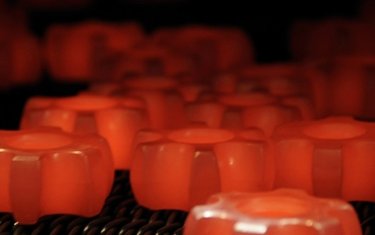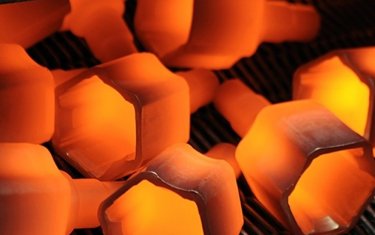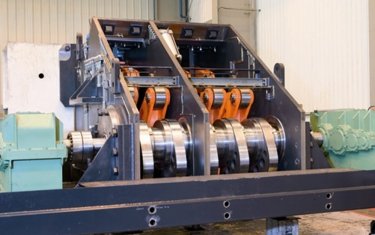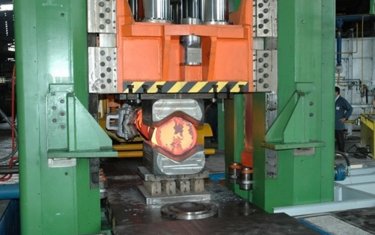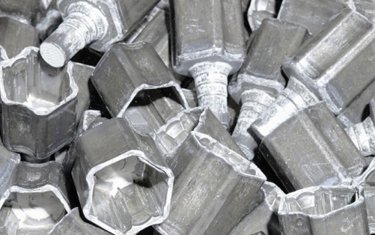Forging is a process that plastically, three-dimensionally deforms a particular starting material, usually in the form of a block, between two tools called dies, moulds or stamps. Although the primary objective of forging is to obtain pieces, heating up and cooling down the metal when working with it constitutes a highly beneficial thermo-mechanical treatment, which structurally improves the characteristics of the starting material and, as a result, the forged pieces offer a high degree of strength and toughness at minimum weight.
Forging can be classified according to the nature of the materials to be transformed, dividing such methods into the forging of ferrous and non-ferrous materials, with the latter group mainly including Al, Cu and Ti alloys.
Depending on the transformation temperature, forging is divided into:
- Hot forging. When such transformation is carried out above the recrystallisation temperature at a temperature close to the melting temperature of the material. For steel, that is between 1,100ºC and 1,250ºC and a lot of force is required at the time of contact
- Cold forging. When it is carried out at room temperature (20°C), it requires a lot of force at the time of contact at a slow speed, so it is essential to correctly synchronise the kinematics of all the elements in order to obtain high quality pieces such as shafts and crankshafts.
- Semi-hot forging. When carried out at temperatures below the recrystallisation temperature it is usually somewhat higher than half the melting temperature. In the case of steel, it happens between the temperatures of 650ºC and 900ºC, with a large amount of lubricant being needed to withstand the dimensional changes it undergoes during the process. The process is really complex because of the high wear and tear suffered by the moulds and the hostile environment in which the equipment operates, both the presses regarding the different kinematics and the peripherals (presses, transfer, ejectors, clamps, etc.)
Depending on the type of moulds used the forge is divided into:
- Free forging, when the stamps are flat or slightly shaped, normally used for the forging of large unit pieces or short series of small pieces.
- Forging by stamping, when the tools have the shape of the piece to be obtained, so that the closing of the moulds forms the whole geometry of the piece. If the process requires an outlet area for the surplus material, it is called forging with a burr, and if it does not have this, it is called forging in closed moulds.
Through forging, a wide variety of pieces can be produced which are used in sectors such as aerospace, automotive, machinery and equipment, industrial tools, construction, mining, railway… Depending on the piece to be obtained, the characteristics of the process vary, but in general the processes and equipment are classified according to the process temperature:
KONIKER is a specialist in the development of machines, solutions and auxiliary peripherals for hot, semi-hot and cold forging processes. Starting from the customer’s needs, KONIKER’s experts in the field of forging contribute all their know-how on improving the behaviour of the current facilities, even proposing modernising features that promote productivity improvements and process inspection window improvements that ensure quality.

